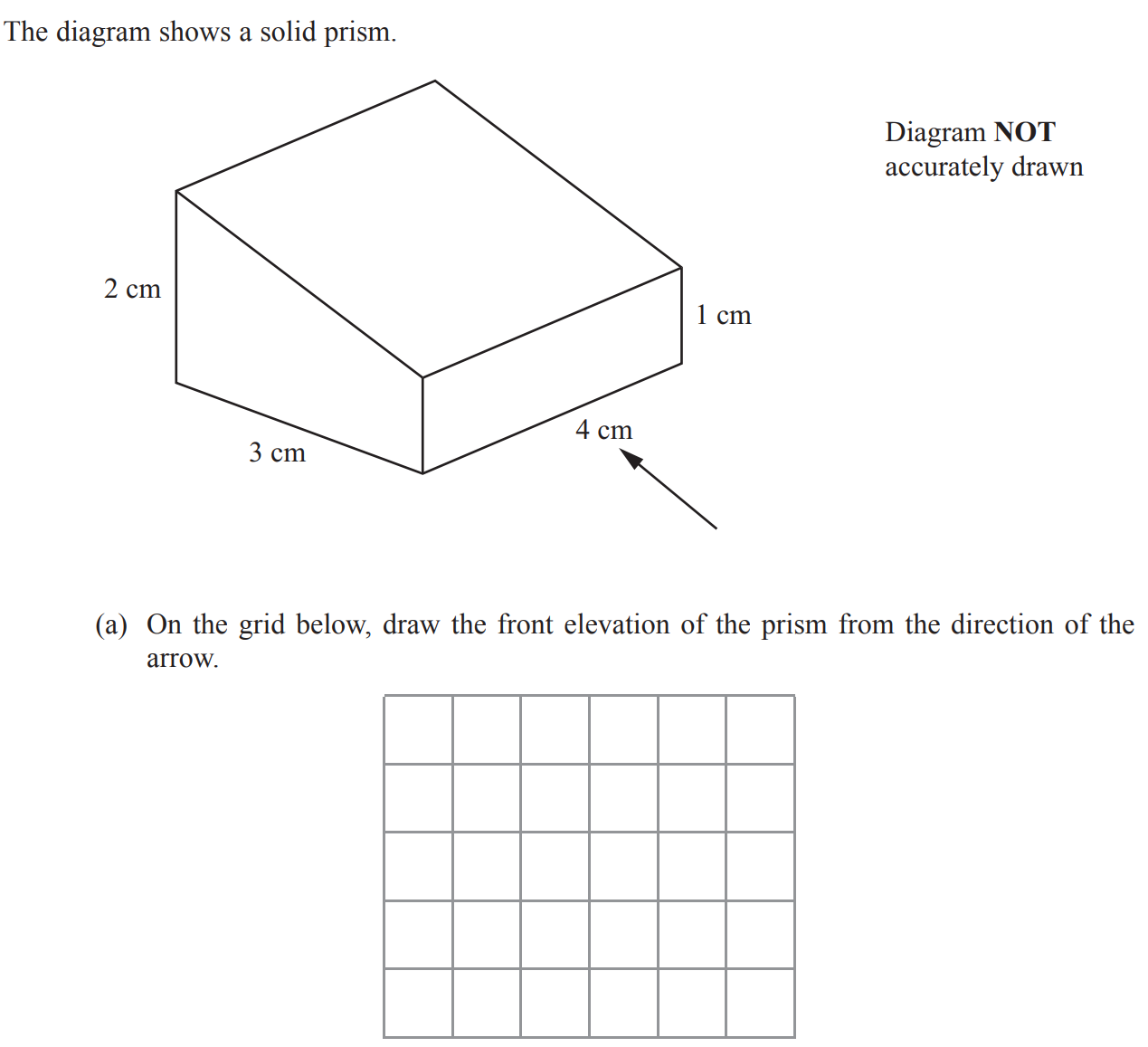
Did this page help you?

How did you do?
Did this page help you?

How did you do?

How did you do?
Did this page help you?

How did you do?

How did you do?
Did this page help you?

How did you do?
Did this page help you?
The diagram shows a kite, ABCD. AFE and CEF are equilateral triangles.

Write down a mathematical name for quadrilateral AFCE.
[1]
How did you do?
Did this page help you?
The diagram shows a circle, centre O.

Write down the mathematical name of
i) line A,
[1]
ii) shaded region B.
[1]
How did you do?
Did this page help you?
Circle the solid that has 7 vertices.
hexagonal prism | hexagon-based pyramid | pentagonal prism | pentagon-based pyramid |
[1]
How did you do?
Did this page help you?
Here is a circle.

Circle the word that describes the shaded part.
segment | chord | sector | arc |
[1]
How did you do?
Did this page help you?
A solid shape is drawn on isometric paper.

On the centimetre grid, draw the elevation of the shape from A.

[1]
How did you do?
On the centimetre grid, draw a plan of the shape.

[1]
How did you do?
Did this page help you?
Complete each statement.
A quadrilateral with only one pair of parallel sides is called a ............................................... .
[1]
How did you do?
An angle greater than 90° but less than 180° is called ............................................... .
[1]
How did you do?
Did this page help you?

The diagram shows a regular pentagon and a kite. Complete the following statements.
The regular pentagon has ................................... lines of symmetry.
[1]
How did you do?
The kite has rotational symmetry of order ................................... .
[1]
How did you do?
Did this page help you?

How did you do?

How did you do?
Did this page help you?

How did you do?
Did this page help you?

How did you do?

How did you do?
Did this page help you?
Here is a sketch of a quadrilateral.
All lengths are in centimetres.

Tick one box for each statement.
| True | May be true | Not true |
The quadrilateral is a rectangle |
|
|
|
The quadrilateral is a parallelogram |
|
|
|
The quadrilateral is a rhombus |
|
|
|
The quadrilateral is a kite |
|
|
|
[3]
How did you do?
Did this page help you?
Tick all the statements that are true for any rhombus.
The diagonals are lines of symmetry
The diagonals bisect each other
The diagonals are perpendicular
The diagonals are equal in length
[1]
How did you do?
Did this page help you?
This shape is made from two triangles and four congruent parallelograms.

For each statement, tick the correct box.
The triangles are equilateral.
Must be true | |
Could be true | |
Must be false |
[1]
How did you do?
The triangles are congruent.
Must be true | |
Could be true | |
Must be false |
[1]
How did you do?
Did this page help you?

Write down the order of rotational symmetry of the diagram.
[1]
How did you do?
Did this page help you?

The diagram shows a pyramid with a square base.
The triangular faces are congruent isosceles triangles.
Write down the number of planes of symmetry of this pyramid.
[1]
How did you do?
Did this page help you?

The diagram shows a cuboid. = 8 cm,
= 4 cm and
= 5 cm.
Write down the number of planes of symmetry of this cuboid.
[1]
How did you do?
Did this page help you?

How did you do?
Did this page help you?

How did you do?
Did this page help you?

How did you do?
Did this page help you?
Here is a cube with edge length cm
One diagonal is shown.

The total length, in centimetres, of the edges of the cube is a multiple of 18
Circle the correct statement.
|
|
|
[1]
How did you do?
Did this page help you?
The cross section of a prism has sides.
Circle the expression for the number of edges of the prism.
[1]
How did you do?
Did this page help you?